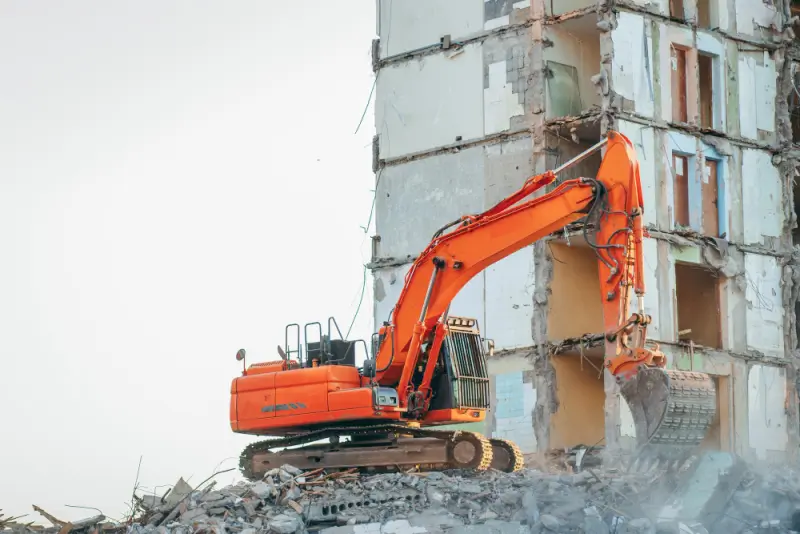Construction work is changing faster than most people realize. New technologies, safety regulations, and building methods are reshaping what it means to be a skilled construction worker. If you're not keeping up with these changes, you might find yourself left behind when better opportunities come along.
Workforce development in construction isn't about sitting in boring classrooms all day. It's about learning new skills that make you more valuable on job sites, help you earn better wages, and keep you working even when the industry shifts. Smart construction workers and companies are already investing in these programs to stay ahead.
Why Construction Workers Need Continuous Learning
The construction industry faces a massive skills shortage. Over the next decade, the industry needs to attract more than 430,000 new workers annually just to meet demand. But it's not just about numbers – the type of work is evolving rapidly.
Modern construction sites use technologies that didn't exist five years ago. Drones survey job sites, 3D printing creates building components, and augmented reality helps workers visualize complex installations. Workers who understand these tools command higher wages and get first pick of the best projects.
Safety requirements keep getting stricter, and for good reason. OSHA regulations change regularly, and new safety technologies require proper training to use effectively. Workers with current safety certifications and training are more valuable to contractors and staffing agencies like FlexCrew USA, who need reliable people for their client projects.
The green building movement is creating entirely new specializations. Solar panel installation, energy-efficient HVAC systems, and sustainable building materials all require specific knowledge and certifications. These green jobs often pay premium wages because there aren't enough qualified workers to fill them.
Consider what's happening with electrical work. Traditional electricians now need to understand smart home systems, electric vehicle charging stations, and renewable energy connections. The electricians who've embraced this training are booked solid, while those who haven't are competing for basic residential work.
Key Skills That Pay More
Certain skills consistently lead to better pay and more job opportunities in construction. Digital literacy tops the list – not because you need to become a programmer, but because construction increasingly relies on digital tools for project management, communication, and quality control.

Equipment operation certifications open doors to higher-paying positions. Crane operators, heavy machinery specialists, and skilled equipment technicians earn significantly more than general laborers. Many of these certifications take weeks rather than years to obtain, making them practical investments in your career.
Specialized trade skills remain highly valuable. Advanced welding certifications, precision concrete work, and complex electrical installations all command premium rates. The key is choosing specializations that align with growing market demands rather than declining sectors.
Project management and supervisory skills help experienced workers move into leadership roles. Understanding scheduling, cost control, and crew management can transition you from hourly work to salaried positions with better benefits and job security.
Safety expertise has become a specialty in its own right. Workers who can serve as safety officers, conduct training, or manage compliance programs are in high demand across all types of construction projects.
FlexCrew USA regularly sees the difference these skills make when placing workers. Contractors specifically request people with current certifications and proven track records with new technologies. The workers who invest in development get the best assignments and highest pay rates.
How Technology is Changing Construction Training
Virtual reality is revolutionizing safety training in construction. Instead of just watching videos about fall protection, workers can experience realistic scenarios without actual risk. This immersive training improves retention and helps people understand why safety protocols matter.
Mobile learning platforms let workers access training during downtime on job sites or at home. Microlearning modules break complex topics into manageable chunks that fit around work schedules. This flexibility makes it easier for working construction professionals to continuously upgrade their skills.
Simulation-based training for equipment operation reduces costs and improves safety. New operators can practice with expensive machinery in virtual environments before touching real equipment. This approach speeds up training while reducing wear and tear on actual machines.
Augmented reality applications help workers learn complex procedures by overlaying digital instructions onto real work environments. Plumbers can see pipe layouts through walls, electricians can visualize wiring paths, and HVAC technicians can understand airflow patterns in buildings.
The best training programs combine high-tech tools with hands-on experience. You still need to swing a hammer, operate real equipment, and work with actual materials. Technology enhances this learning but doesn't replace the fundamentals of construction work.
Building Your Career Through Workforce Development
Successful construction careers require strategic thinking about skill development. Start by identifying growth areas in your local market. Are solar installations increasing? Is there more commercial renovation work? Focus your training efforts on skills that align with these trends.
Apprenticeship programs remain one of the best paths for comprehensive skill development. Modern apprenticeships often include both traditional craft training and new technology exposure. Many programs also offer pathways to supervisory roles and business ownership.
Professional associations provide networking opportunities and continuing education resources. Groups like the Associated General Contractors offer training programs, certification courses, and connections to employers looking for skilled workers.
Industry certifications from recognized organizations carry weight with employers. NCCER credentials, OSHA safety certifications, and manufacturer-specific training certificates all demonstrate your commitment to professional development.
Don't overlook soft skills development. Communication, teamwork, and problem-solving abilities become more important as you advance in your career. Workers who can interact effectively with clients, manage conflicts, and lead teams are the ones who get promoted.
Making Development Programs Work for You
The most effective workforce development happens when you take ownership of your learning. Set specific goals about what skills you want to develop and when you want to achieve them. This focused approach is more effective than random training participation.
Look for employers and staffing agencies that invest in their workers' development. Companies like FlexCrew USA understand that skilled workers are their most valuable asset and often provide training opportunities or tuition assistance for relevant courses.
Balance immediate needs with long-term career goals. You might need forklift certification for your current job, but also consider learning about building information modeling (BIM) if you want to move into project coordination roles.

Network with other construction professionals who are advancing their careers. They can recommend training programs, share information about job opportunities, and provide mentorship as you develop new skills.
Track your progress and document your achievements. Keep records of certifications, training completion, and new skills you've mastered. This documentation becomes valuable when applying for new positions or requesting pay increases.
The Business Case for Development
Smart construction companies invest in workforce development because it directly impacts their bottom line. Skilled workers complete projects faster, make fewer mistakes, and create fewer safety incidents. These improvements translate to higher profits and better client relationships.
Employee retention improves significantly when companies provide development opportunities. The construction industry's high turnover rate costs companies thousands of dollars per worker in recruiting and training costs. Development programs help retain good people.
Companies with well-trained workforces can bid on more complex projects that require specific skills or certifications. This expanded capability opens new revenue streams and often leads to higher-margin work.
Insurance costs and liability exposure decrease when workers receive proper training, particularly in safety and equipment operation. These savings can be substantial for companies that work on large or high-risk projects.
The construction industry's future belongs to workers and companies that embrace continuous learning. The technologies, methods, and requirements will keep evolving, but the principle remains constant: those who adapt and grow will thrive, while those who resist change will struggle.
Your career in construction doesn't have to be limited by what you know today. Workforce development gives you the tools to build not just structures, but a stronger, more rewarding professional future.
Frequently Asked Questions
Q. What is workforce development in construction and why does it matter?A. Workforce development in construction involves training programs that help workers learn new skills, use modern technologies, and advance their careers. It matters because skilled workers earn more and have better job security.
Q. How much time should construction workers spend on training?
A. Most successful construction workers dedicate 40-80 hours annually to skill development through certifications, safety training, and learning new technologies.
Q. What skills are most valuable for construction workers in 2025?
A. Digital tool proficiency, equipment operation certifications, green building techniques, advanced safety training, and project management skills command the highest wages.
Q. How long does it take to see career benefits from workforce development?
A. New certifications can increase pay immediately, while comprehensive skill development typically shows career advancement within 6-12 months.
Q. Can experienced construction workers benefit from workforce development?
A. Yes, experienced workers often see the biggest benefits by adding supervisory skills, new technology training, or specialized certifications to their existing expertise.
Q. What role does technology play in construction training?
A. Technology enables virtual reality safety training, mobile learning platforms, equipment simulators, and augmented reality job aids that make learning more effective and accessible.
Q. How do construction workers find good workforce development programs?
A. Check with trade associations, union training centers, community colleges, equipment manufacturers, and staffing agencies like FlexCrew USA that often provide or recommend quality training programs.



